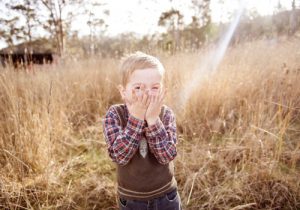Self-care vs Self-regulation
10th April 2018
Share this entry:
By Jane Evans

Within the teams, we measured our worth by who was working the longest hours, doing the toughest emotional and physical jobs. It wasn’t healthy to think and behave in this way but it was hard to step outside of it. To take breaks, to go home on time as then you felt like a slacker. In and out of work sickness rates were high.
In early years I often see a similar response to the idea of self-care. Working with children is all about giving and caring. Also, lifting, bending, standing, holding, climbing and getting up and down. Emotionally it is about absorbing the many, ever-changing feelings of the children. Whilst simultaneously trying to regulate them so they feel comfortable enough to enjoy their day and develop well.
I am not going to talk about self-care so you can put the candles and bubble bath away
Why? Because my work on understanding the impact of stress and anxiety has revealed that what we first need is the ability to self-regulate.
The benefits are:
- Calmness
- Reduced stress
- Better connection to our feelings
- Greater ability to tune into the feelings of others
- Less overwhelm
- Better physical wellbeing
- Increased levels of contentment
Why does self-regulation have to be about the body?
If we could simply think ourselves out of our stress and reactivity, we would. Our brain and body are connected and always sharing information about the physical environment and our internal environment. If we learn how to make this conversation a resource then we are on to a winner!
When we are able to use our body systems to calm our thinking and emotions, life slows down and feels less of an emergency 24/7. If we work with children this is not an add-on it is a must.
Children tune into adult’s stress
Children’s under-developed brains mean they rely on their instincts to keep them emotionally and physically safe. They have to tune in to the adults around them to track physical signals that they are safe to be around and the setting is a place to relax in. When this is unpredictable, or not on offer, children stay on high alert in a state of fight, flight or shut-down.
Exploring, learning, getting on with others and enjoyment can’t happen for children who remain on high alert. Behaviours such as fear driven outbursts, big emotions and refusals to do as they are asked can be seen as difficult or challenging. Or they will repeatedly shut down and withdraw, often becoming the invisible child.
Self-regulation is simple
The good news is self-regulation can be done anywhere at any time. No need for Lycra, mats, running shoes or to work up a sweat. The exercises I share have been developed from many years of studying leading experts in the field of body regulation, Peter Levine, Pat Ogden, Bessel van der Kolk, Stuart Shanker, and many more.
To encourage the body and brain to feel safe we need to carefully connect them up so they become aware of the conversation they are having. Then we need to let the body calm the brain. Key to this is breathing. Luckily this is something we all do but mostly automatically unless we get breathless.
Here are a few simple exercises to try…
Please be aware that each body has its own history so what one of us finds soothing, another person may not.
Go slowly so you can check in carefully to see how your body responds to each movement.
- Breathing slowly in through the nose whilst imaging the air going straight through a vent in the chest down to your belly.
Breathe slowly out through the mouth. Adding big ahhhhhhhhhh if you can.
- Plant your feet firmly on the ground, check the toes, ball of the foot, heel and sides have contact. Send your weight down to them, knees bend a bit, lower back drops and shoulders release. Breathe long slow breaths; gently sway from side to side.
- Smile on the outside and inside, breathe, in your head say, “I am grateful for…” Think of 3 easy things. My cloths to keep me covered, that I have food for my lunch, the children’s smiles.
All these practices change the chemistry and way the body systems respond. The brain then gets a clear signal, we are safe, we can relax. Being in a state of high-alert wears our body and brain out as nature never meant us to live that way, so we get sick.
Making self-regulation part of your life as it will pay you back a million times over in and out of work. It takes practice but when we commit to this new way of being it changes everything for us, and for the children.
A great place to start is with my story book Little Meerkat’s Big Panic which explains the science behind body and brain calmness for early year’s children.
For more information on self-regulation, wellness and resilience visit www.thejaneevans.com
To discuss your settings training needs: janeevans61@hotmail.co.uk
Why attend Childcare Expo?
Join over 2,500 like-minded individuals from the early years sector who are dedicated to improving both practice and their childcare settings.
Attend educational seminars to credit your CPD
Meet the experts to have your questions answered
Receive fantastic onsite offers and discounts
Experience expert-led informative hands-on workshops
Network with peers and industry players
Pick up hundreds of new product ideas and services
And most of all, enjoy a great day out with your colleagues




